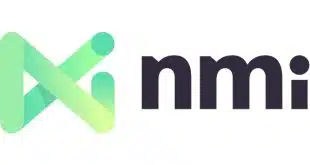n
Fees of various kinds now account for 40% of revenue for acquirers serving small merchants, with fees related to compliance with the Payment Card Industry data-security standard (PCI) being “ubiquitous,” according to a study just out from First Annapolis Consulting Inc., Linthicum, Md.
n
Merchant processors, banks, and independent sales organizations that process transactions for merchants with annual sales of less than $10 million—the vast majority of U.S. retailers—have added on a wide array of fees in recent years for items ranging from statements to monthly minimums to chargeback processing and authorizations. Indeed, among small merchants, the proportion of acquirer revenue stemming from fees has grown from 23% in 2000, the first year First Annapolis tracked the trend. Acquirers still derive well more than half of their revenue from their markup on network interchange, though the study shows this percentage is shrinking.
n
Some of the items now charged for separately may well have been rolled into overall billing in the past. But acquirers have been “unbundling their fees, and are more and more dependent on fees,” says Emily Boese, senior manager at First Annapolis and a co-author of the study. She likens the trend to that seen now in the airline industry, where air carriers have opened up important new streams of revenue by charging separate fees for services such as checking luggage.
n
Boese sees the trend continuing, with the fraction of revenue derived from fees ranging “slightly” higher than 40% in the years to come. As recently as 2005, fees accounted for just 31% of revenue from small merchants, but by 2007 this share had already climbed to 37%, First Annapolis’s figures show.
n
While some merchants may grumble about fees, Boese argues acquirers’ move to levy them may actually benefit their clients. When charges were included in overall pricing, all merchants paid them regardless of whether they used the service or incurred the charge. “I look at the unbundling as a good thing,” she says. “If I’m a merchant that doesn’t have a lot of chargebacks, then I’m not paying for chargebacks any more.”
n
Similarly, acquirers are better off, Boese argues, even though they appear to be more dependent on fees. As with the airlines, they’ve been able to open new and diverse revenue streams and experiment with new charges to see what works and what doesn’t. “They’ve been able to expand the areas they get revenue from,” she says, allowing acquirers to pick up revenue that once flowed to other vendors. An example Boese cites is gateway services, where an acquirer may now charge fees for processor connections that once would have been provided by a developer or other third party.
n
Fees related to PCI compliance have spread so thoroughly through acquiring that between 75% and 80% of small merchants now pay them, First Annapolis estimates. The fact that PCI fees are so widely applied—and are at what First Annapolis calls “big-ticket” levels—may help explain the rising importance of fees to acquiring revenues relative to discount income. The median fees for compliance programs range from $100 to $150 a year, while so-called non-compliance fees are even higher, ranging from $200 to $250, according to First Annapolis. These are “pretty big numbers for a portfolio of small merchants,” the firm’s report says.



